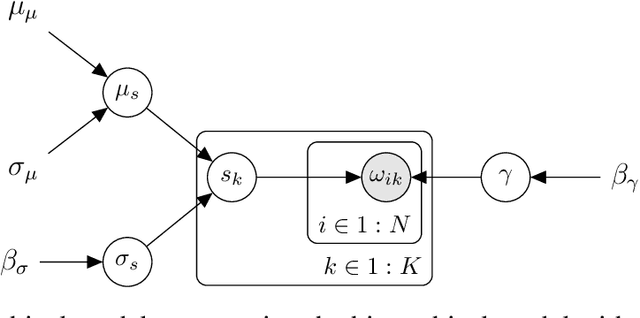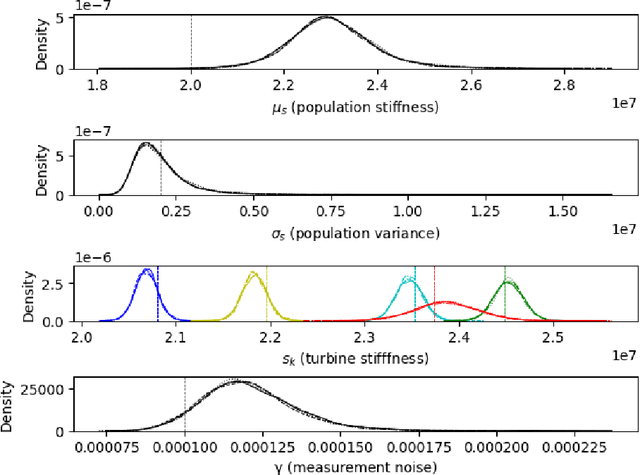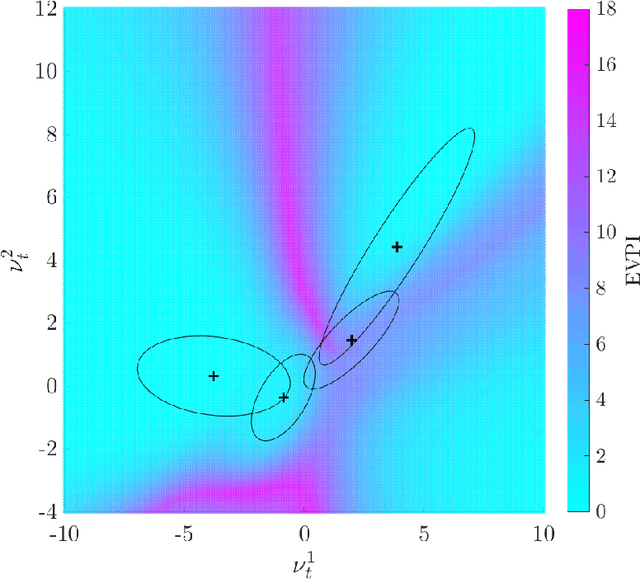A. J. Hughes
Active transfer learning for structural health monitoring
Oct 31, 2025Abstract:Data for training structural health monitoring (SHM) systems are often expensive and/or impractical to obtain, particularly for labelled data. Population-based SHM (PBSHM) aims to address this limitation by leveraging data from multiple structures. However, data from different structures will follow distinct distributions, potentially leading to large generalisation errors for models learnt via conventional machine learning methods. To address this issue, transfer learning -- in the form of domain adaptation (DA) -- can be used to align the data distributions. Most previous approaches have only considered \emph{unsupervised} DA, where no labelled target data are available; they do not consider how to incorporate these technologies in an online framework -- updating as labels are obtained throughout the monitoring campaign. This paper proposes a Bayesian framework for DA in PBSHM, that can improve unsupervised DA mappings using a limited quantity of labelled target data. In addition, this model is integrated into an active sampling strategy to guide inspections to select the most informative observations to label -- leading to further reductions in the required labelled data to learn a target classifier. The effectiveness of this methodology is evaluated on a population of experimental bridges. Specifically, this population includes data corresponding to several damage states, as well as, a comprehensive set of environmental conditions. It is found that combining transfer learning and active learning can improve data efficiency when learning classification models in label-scarce scenarios. This result has implications for data-informed operation and maintenance of structures, suggesting a reduction in inspections over the operational lifetime of a structure -- and therefore a reduction in operational costs -- can be achieved.
Anomaly Detection in Offshore Wind Turbine Structures using Hierarchical Bayesian Modelling
Feb 29, 2024



Abstract:Population-based structural health monitoring (PBSHM), aims to share information between members of a population. An offshore wind (OW) farm could be considered as a population of nominally-identical wind-turbine structures. However, benign variations exist among members, such as geometry, sea-bed conditions and temperature differences. These factors could influence structural properties and therefore the dynamic response, making it more difficult to detect structural problems via traditional SHM techniques. This paper explores the use of a hierarchical Bayesian model to infer expected soil stiffness distributions at both population and local levels, as a basis to perform anomaly detection, in the form of scour, for new and existing turbines. To do this, observations of natural frequency will be generated as though they are from a small population of wind turbines. Differences between individual observations will be introduced by postulating distributions over the soil stiffness and measurement noise, as well as reducing soil depth (to represent scour), in the case of anomaly detection.
On risk-based active learning for structural health monitoring
May 12, 2021



Abstract:A primary motivation for the development and implementation of structural health monitoring systems, is the prospect of gaining the ability to make informed decisions regarding the operation and maintenance of structures and infrastructure. Unfortunately, descriptive labels for measured data corresponding to health-state information for the structure of interest are seldom available prior to the implementation of a monitoring system. This issue limits the applicability of the traditional supervised and unsupervised approaches to machine learning in the development of statistical classifiers for decision-supporting SHM systems. The current paper presents a risk-based formulation of active learning, in which the querying of class-label information is guided by the expected value of said information for each incipient data point. When applied to structural health monitoring, the querying of class labels can be mapped onto the inspection of a structure of interest in order to determine its health state. In the current paper, the risk-based active learning process is explained and visualised via a representative numerical example and subsequently applied to the Z24 Bridge benchmark. The results of the case studies indicate that a decision-maker's performance can be improved via the risk-based active learning of a statistical classifier, such that the decision process itself is taken into account.
 Add to Chrome
Add to Chrome Add to Firefox
Add to Firefox Add to Edge
Add to Edge